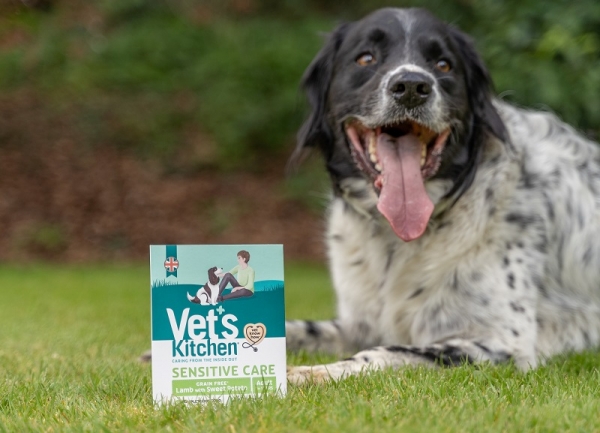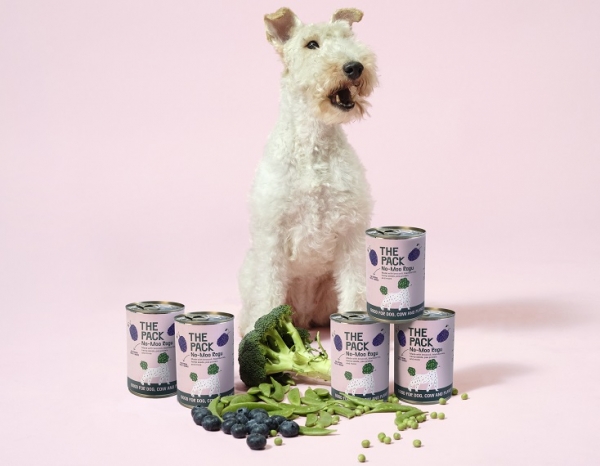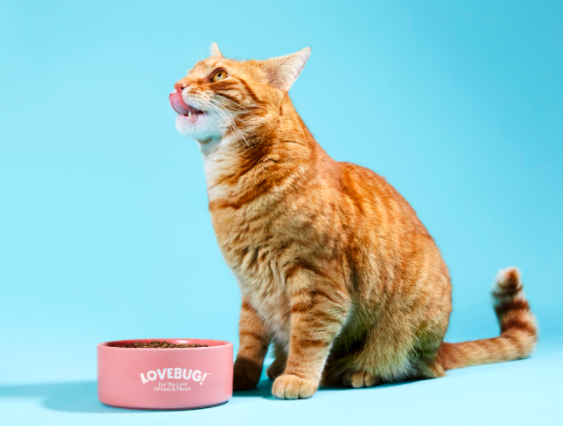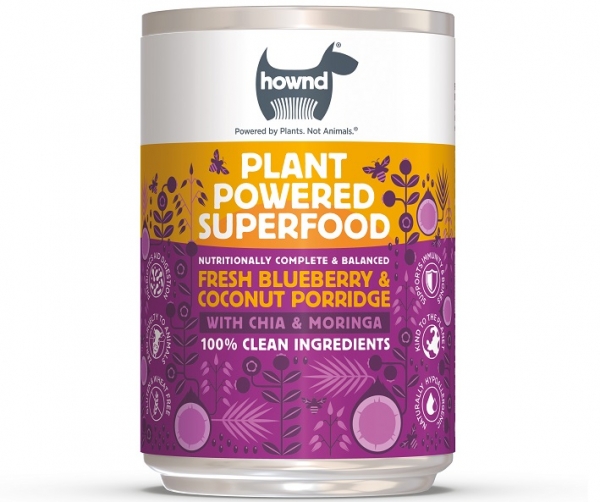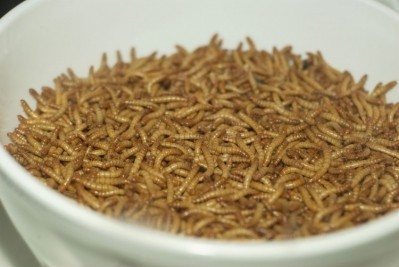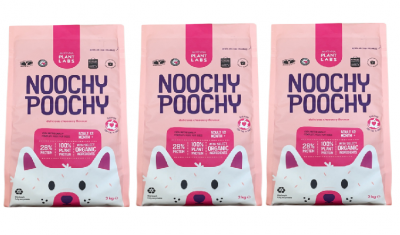Digital Feature
Pet food processing: how are human and animal tastes converging?
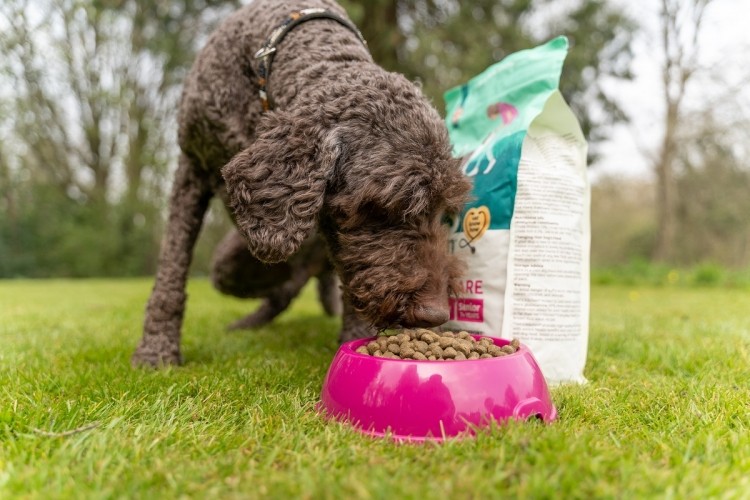
The UK is a nation of pet owners. According to the latest statistics from the Pet Food Manufacturers Association (PFMA) 59% of UK households now have a pet.
By far the biggest proportion of these animal lovers own cats and dogs with over 12.5m households having a dog and 12.2m a cat.
During the COVID-19 pandemic many people found they were working at home spending more time with their pets or were in a position to take on a new member of the family.
The result was that 11% of the UK or 3.2m households acquired a pet since the start of the pandemic (source: PFMA).
What does this mean for the £3.2bn pet food (source: PFMA) market and its manufacturers?
Humanisation of pets
“In terms of trends, one of the biggest long-standing trends is the humanisation of pets and the clear understanding that pets are considered important family members,” says Nicole Paley, deputy chief executive – communications & animal welfare at PFMA. “People shop for pet food in the same way they shop and consider what food to feed themselves.”
“There has been growth in interest in diets such as vegetarian pet foods and insect-based protein. Whatever diet is chosen, the role of the manufacturer is to ensure complete and balanced nutrition. Pets are not small people; they each have very specific nutritional needs.”
Food manufacturers have been responding to this demand. There is now premium gourmet, raw, insect based, vegan, specialist diets and a host of innovations hitting the market from ice cream to porridge to recipe boxes delivered direct to the door.
Growth in entrepreneurial operators
While the pet food sector has been dominated by the bigger food manufacturers for many years, these demands have seen a growth in small entrepreneurial operators.
Reiser field sales manager Ed Hewitt, says much of this trend has been driven by pet owners who could not find the right products for their dog or cat, so decided to set up their own businesses. He describes these businesses as ‘gamechangers’.
“I think that is quite interesting because they come into the industry with a different set of eyes,” he says.
“COVID-19 may have driven it quicker but people’s eyes have been open to better products.”
This is a view supported by Nestlé Purina Petcare, which maintains that pet food often takes its cues from human trends.
Growth in premium
“An increasing number of shoppers and now owners have grown up preferring more natural nutrition and similarly low carbohydrate grain-free diets,” says Ben Duncan, market development organisation director for northern region (UK, Netherlands and Nordics) for the business.
“These nutritional choices then often can form a basis of their buying habits for their pets too.
“As consumers continue to humanise their pets’ eating habits, there is a growing trend around premium, more luxury food that allows owners to indulge their pets.”
The move has led to the launch of Nestlé Purina Petcare’s Gourmet Revelations premium brand.
Mars Petcare UK reports its premium brands Cesar and Sheba growing at 8% (trays) and 14% (pouches) respectively.
Arthur Renault, UK portfolio director says: “Premiumisation has long been a key driver of petcare sales, but the last 12 months has seen the trend grow its popularity even further, with 40% of owners viewing their pet as a child or family member. With such strong sentiment, it’s no wonder premium offerings are continuing to drive petcare sales.”
Raw products
The premium trend has also meant there’s significant interest in raw products for pets, which has been fuelled by the small entrepreneurial companies.
James Langan, managing director at Natures Menu - believes there has been a substantial shift for manufacturers to supply foods such as raw frozen. He says this ‘provides a more premium, sustainable and natural way of feeding that reflects the same trends reported for human food’.
While there may be concerns about the safety of such products, Langan claims they are closely monitored with strict legislation.
“We manufacture our diets in line with best practice guidelines, which have been developed in conjunction with Department for Environment, Food and Rural Affairs (DEFRA), the Animal Plant & Health Agency, Public Health England and the Food Standards Agency,” he says.
“Our pre-packaged complete raw range can simply be thawed in the pack from frozen and served straight to bowl safely and conveniently.
“Whilst raw pet food carries no greater risk than handling fresh raw meat intended for humans, pet owners must be dedicated to careful storage, handling and good hygiene practices, as they would with handling any meat products.”
Feline pancytopenia recall
A clear sign that pet food is treated as seriously as human food was the handling of the June recall of cat food associated with illness and death in hundreds of cats.
Extensive work was undertaken to identify the cause by the FSA, Food Standards Scotland, Royal Veterinary College, DEFRA, the Animal and Plant Health Agency, local authorities and the pet food supply chain.
Feline pancytopenia was identified as the potential issue. No unsafe cat food was identified, but Fold Hill Foods, the manufacturers of products linked by consumers to affected cats issued a precautionary recall of certain batches.
Analytical tests were initially undertaken to look for heavy metals and mycotoxins, including T-2/HT-2 in the recalled food, as these toxins are known to be able to cause pancytopenia in cats.
Tests were also undertaken to see if some of these toxins or any deficiencies in essential vitamins and minerals could be identified in the bloods of cats with confirmed cases of feline pancytopenia. Results have yet to be published.
Health & nutrition
While consumers are keen to give their pets the best, specialist products targeted at specific issues such as the age of the pet, or specific health problems such as digestion or kidney problems are also proving popular.
Jimmy Park, general manager, Royal Canin says the COVID-19 impact caused a spike in demand, especially as many people chose to welcome a new puppy or kitten into their household during lockdown.
“We’ve seen a surge in demand for our Start of Life diets this year, which could suggest that owners are becoming more aware of young pets’ specific nutritional needs and moving towards health-focused science-based nutrition,” he adds.
Laura Shears, managing director of Vets Kitchen, acknowledges that COVID-19 has helped to increase awareness of pet health driving demand for functional pet foods.
“Innovations will come from trying to get the balance of natural versus science correct,” she says. “The humanisation of pets means the drive towards natural is there, but owners expect their pet food to do more than just provide calories. It should have functional science-based ingredients too.”
This is a trend backed by Butchers Petcare as Phil Cotterill, head of insight, says. “With health and wellbeing becoming even more top of mind at Butcher’s we have seen accelerated growth on our range of natural health solutions which help owners tackle anything from managing a healthy weight to providing food for more sensitive stomachs.”
Non-allergenic
Arden Grange, which has focused on producing non-allergenic foods for pets for 25 years, witnessed a spike in sales, including wet food products during the pandemic as people were increasingly staying at home. Its hypo allergenic range means it does not include the most common allergens, which include wheat, gluten, beef, soya and dairy products.
Nutrition advisor Ness Bird reveals it is also looking at ingredients that can offer added health benefits. This includes one ingredient that combines dark-skinned berries and another supplement tested with veterinary organisations that have proven benefits for respiration and digestion.
Bird adds: “With the increasing number of lockdown pets, there is an increasing number (especially dogs) with behavioural problems such as poor socialisation and separation anxiety when owners are returning to work. We therefore feel that diets with neurological support are going to become more popular.”
Whatever the function or benefit food manufacturers are responding and developing more natural products with better quality ingredients.
Samantha Crossley, marketing director at Lily’s Kitchen says natural pet food is growing ahead of the overall market.
“Ingredients that provide nutritional or functional benefits have also seen a sharp rise in demand, with 60% of shoppers choosing pet food based on its health benefits and 41% looking for natural pet food,” she adds.
Ethics and veganism
Companies such as Lily’s Kitchen and The Pack have been quick to seize on an increase in demand for vegan dog food, in line with the increased popularity of veganism and Veganuary, to develop products for this market.
“We wanted to help consumers meet this new need with the introduction of our Vibrant Rainbow Stew last year, and the product has been continuously popular, so we predict this trend will continue,” Crossley claims.
It is this ethics-driven move by consumers that is now filtering into the pet food market. They want their pet foods to not only be functional and nutritionally sound but also to help the planet.
This is never been more important, as recent research by a University of Edinburgh-led project indicates an area double the size of the UK is used to produce dry pet food for cats and dogs annually. It suggests the industry emits more greenhouse gases each year than countries such as Mozambique and the Philippines.
Lucy McKinna, founder of McKinna PlantLabs specialises in ethics-driven canine nutritional foods. She believes that due to the pandemic there is more awareness about disease evolution risks from animal farming, the planet and animal welfare.
While the dog food market is already following the human market into nutritionally complete plant-based options ‘we will see this continue to explode in the next few months, with the cat food market set to follow albeit much more slowly’, she adds.
Insect-based pet food
Tapping into this interest in sustainability, Mars Petcare has launched Lovebug, an insect-based protein food for cats. It’s made using black soldier fly larvae, which can be reared on a wide range of food industry by-products.
The bugs take up 80% less land than beef, per kilo of protein, and are also fed on 100% surplus veggies and plants reducing food waste, the company says.
And the innovation is set to continue with even more new product development from food manufacturers keen to carve out a niche in a crowded market.
Hownd has recently launched what it claims is the world’s first ready-made porridge for dogs - Fresh Blueberry & Coconut Porridge with Chia & Oats.
Hownd co-founder Jo Amit says: “Coupled with concerns over animal welfare and the increasing climate change crisis, we believe it's a trend that's here to stay. But it's up to the pet owner, along with support from professionals to ensure the chosen diet is right for that individual dog and that the dog enjoys its food.”
Ice cream for dogs
There’s now even an ice cream for dogs, which has been created by Jude’s in partnership with Battersea Dogs & Cats Home. Made using real fruit purées, Jude’s Ice Cream for Dogs is a plant-based Strawberry, Apple & Banana ice cream.
Chow Mezger, managing director and co-founder of Jude's, says producing an ice cream for dogs was an extension of its brand, which produces ice cream for human consumption.
“We were delighted to work with Battersea on our Ice Cream for Dogs with 5% of sales going to support their incredible work,” he adds. “It turns out that lots of our customers are just as keen to treat the family pooch as we are.”
And this is just the tip of the iceberg, with The Pack claiming to be the first company in the world to produce multiple plant-based wet dog food flavours, which simulate meat while Sniffe & Likkit’s ‘Home Barking’ Kit for dogs means owners can actually bake for their pooch at home.
Food manufacturers are responding to numerous emerging trends in pet food from luxury treats, nutrition, natural, sustainable, added benefits to functional food. And the category looks like it will continue to dynamically evolve for the foreseeable future.
Equipping for change
Manufacturers must adapt their production lines to deal with the unique challenges posed by shifting ingredients and quality trends.
Reiser, field sales manager, Ed Hewitt, highlights that pet foods are increasingly coming under the spotlight from the Government, including DEFRA.
He advises that products such as raw food need to be carefully produced with the right machinery in place.
“The start-ups will try to start on a shoestring but that old machinery might not be the most hygienic,” he adds.
“The industry has grown so quickly in terms of raw and there are modern recipes available I think that the governance of it almost needs to catch up.”
This innovation requires more complex machinery. Food manufacturers no longer produce food just for pouches or tins, but must form shapes such as blocks, sausages or balls with machinery capable of doing that.
“We have found a lot of the machinery we use in manufacturing of human food is also used in pet food,” Hewitt says.
As an example, GEA announced in August the launch of its xTru Twin 140 extruder designed to process dry pet food as well as breakfast cereals and other extruded products. It has a production capacity of more than three tons of pellets and ten tons of pet food kibbles an hour and can handle 2D, 3D, multilayers, square shapes, punched and direct extruded products.
Powered screws provide users up to 40% increased capacity with the same efficiency, quality and footprint as previous models. There’s a high-speed premixer for perfectly hydrating flour; a large, curved mixing vessel that facilitates good water absorption and a vertical forced feeding screw to control the dough’s movement into the cooking screw. Other features include variable speed motors with safety clutches; a high-torque, double cascade gearbox designed for excellent power reserves and safety, co-rotating, fully intermeshing twin screws and a modular barrel for properly cooking cereal-based dough.
The technology can be applied to existing xTru Twin extruders too – models 70/92/112 – and retrofitted to older machines to increase their capacity without changing factory floorplans.

